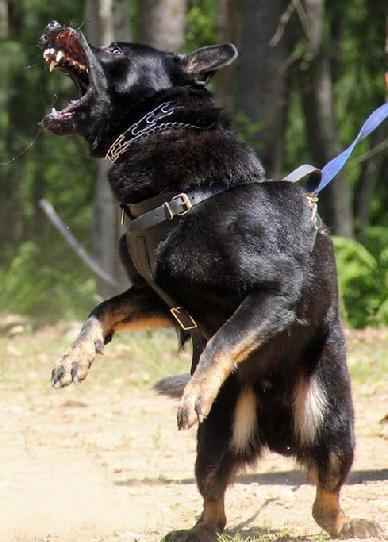
Are Prong Collars Humane? Dog Training Tool, or Torture?
The question “Are prong collars humane” is a complex one, and depends on a number of factors…
The answer is one of the most debated in the dog world and often comes as a big point of confusion for new dog owners looking for an effective way to train their new best friend.
The prong collar, like any other training device, is a tool.
So, are prong collars humane, or not?
It’s a great question.
Let me explain…
Tools, when used correctly and effectively are great aids in speeding up the intended process.
On the other hand, if used incorrectly they can cause damage and hinder progress. A hammer, for instance, can be used to drive nails in order to build a house; a hammer can also be used to break into a locked car.
A prong collar when used in the proper manner is meant to give a swift correction similar to another dogs bite.
The dog training tool mimics a mother dog.
Mother dogs correct their young by biting and other dogs correct each other by biting. They don’t give treats or praise when dogs act appropriately, they only have something to relay to one another when a dog acts out-of-line.
Prong collars operate by distributing even pressure around the dog’s neck when delivering a correction, mimicking another dog’s teeth.
This makes them safer than any other collar when giving a leash correction.*
Considering the pros and cons of other collar types is important when answering the question “are dog collars humane”
Here are some dog collars and the fashion in which they function when giving a correction.
 Martingale collars…
Martingale collars…
Similar to prong collars in design, administer even pressure but only when tightened slowly and are designed to have limited choking capabilities, but when pulled in a swift correction administering manner martingales act like a flat collar yanking the dog’s neck.
Flat (buckle) collars…
Push against the dogs throat and jerk the dog’s neck.
Choke, slip & dominant dog collars…
Choke/restrict or eliminate the passage of air to the dog’s lungs but when giving a swift correction apply pressure only where the “O” ring meets the chain or material.
Head halters (Gentle Leader™ included)…
Turn the dogs head like a wrench. Using the laws of physics this collar applies torque by sitting out on the dogs muzzle and using the neck as a fulcrum point.**
I use a prong collar as my set of teeth and teach my clients to do the same.
Brandon Hayes
If a dog acts inappropriately, a bite of my own is administered. Biting is by far the fastest way to communicate with a dog. Dogs innately understand being bitten and respond accordingly when they are.
So, are prong collars humane? Yes, when used the right way. But with all of this being said, prong collars are NOT for every dog.
For the most part they are not for puppies, handler aggressive dogs, extremely dog/animal aggressive dogs, and the list goes on and on.
But for your average, run of the mill dog they are a great way to communicate with your dog and correct unwanted behavior in a way your canine counterpart can understand.
* Note: Electronic collars are the safest form of correction but don’t require a leash.
** Halters are second to none for control, but they don’t teach the dog. In addition, halters are used for controlling 1500 pound animals we call horses, and are an unnecessary means of physical restraint when it comes to most canine/human interaction.
About the Author Brandon Hayes
Founder of Hayes Haus Kennels, Brandon Hayes grew up in Massachusetts and is no stranger to the dog world. He's been working as a dog trainer for 15+ years and breeding German Shepherd Dogs since 2009. In his free time, he enjoys coaching wresting at Triton High School.

